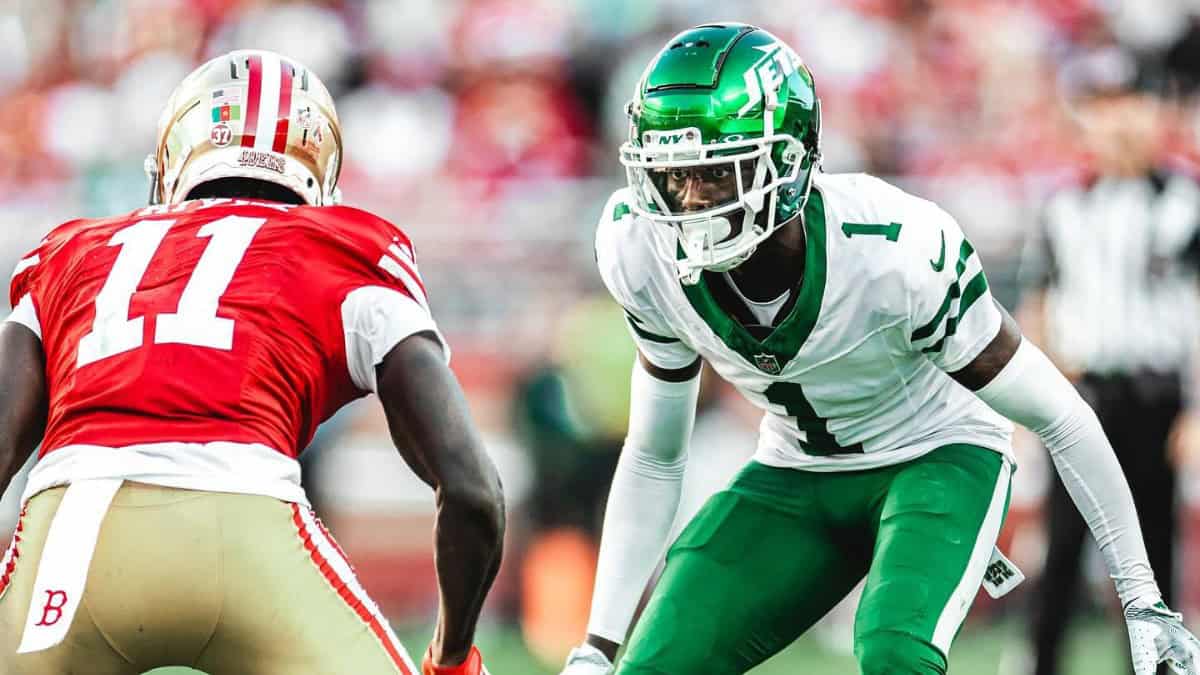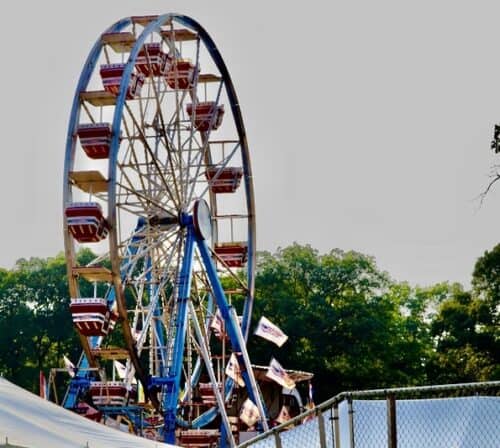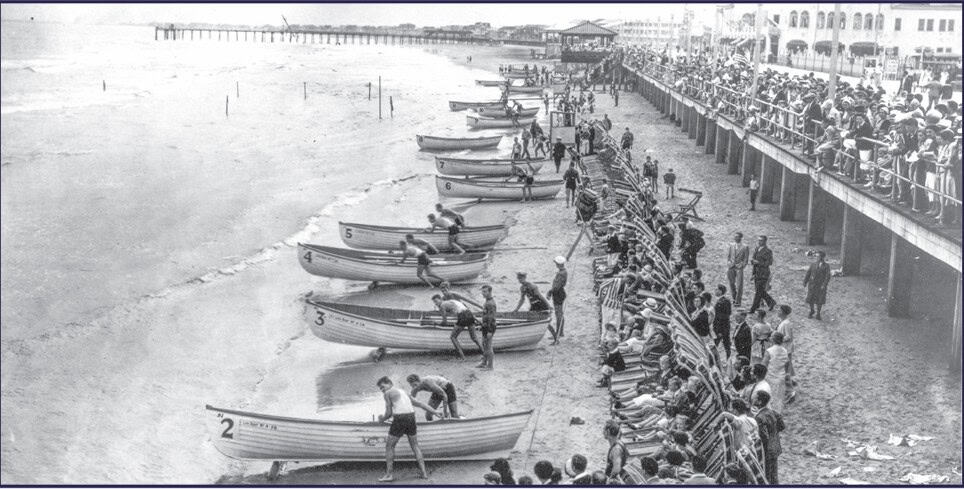Penguin Parade
Penguins in Antarctica give our columnist a fun peek at formal wear and spiky hairstyles—all fit for an ice floe huddle.

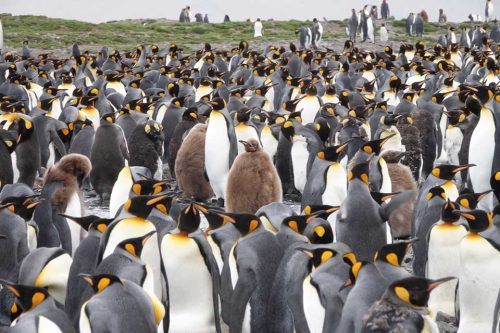
This is the last in a series of three articles about our trip to Antarctica. We encountered our first penguins in the Falkland Islands at West Point Island. There we walked a grassy island devoid of trees, with some scattered shrubs. The light breeze moved dense low tussock grasses and heaths. It was sunny and most of us unzipped or peeled off our parkas.
Striated caracaras soared about on the prowl for meals. Their large hooked beaks and talons define them as top predators. Some were obviously successful as we saw entrails being torn from the carcasses of upland geese and other prey.
We walked uphill for a mile or two to the opposite side of the island, from our landing site to a rocky outcropping filled with nesting black-browed albatrosses and southern rockhopper penguins. We stood in a labyrinth of paths buried in tall grasses adjacent to the colony. Albatrosses were wailing and making a cross between a honk and a nasal “ha, ha, ha, ha” sound, referred to as croaks. Some were courtship-dueling with their bills, adding to the cacophony of chaotic sounds coming from the high rocky breeding area.
The rockhoppers were chattering their grating barks and uttering braying noises. The din drowned out the sound of people’s voices except for those very closely to me. I was audibly challenged to take it all in, and someone next to me exclaimed, “I had no idea it would be so noisy!”
I began by focusing on individual birds. The eyeliner of the huge albatrosses within a few feet of me was beautifully stunning. At first the tiny rockhoppers were upstaged by the black-browed albatross’ three-foot long bodies, huge beaks, and nearly eight-foot wingspans as they flew into the colony.
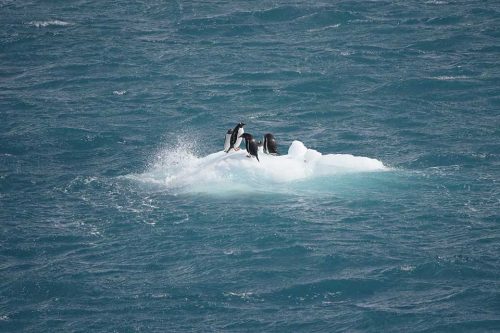
Then after a few moments I started to notice the clusters of baby rockhopper penguins in creches of three and more. It seemed impossible that the downy feathers weren’t actually chinchilla fur. The first adult I saw was perched on a nest, with its yellow brows and yellow/white side crests about 20 inches tall. It wasn’t until I noticed an adult making one- to two foot leaps from rock to rock that I made out the punk rock hairdo for which they are famed. The top of their head looks like a black sea urchin or pin cushion, with crazy longer feathers on the side.
Like penguins the world over they are counter-shaded black on the back and white on the underside. As with many marine species, this helps them hide from both predator and prey. From above they blend in with the dark depths of the ocean; from below, the light from the surface.
Their bills and various head markings are attractive to the opposite sex. Furthermore the colors we see in the various beak- and head-markings of individual species of penguins are not what birds perceive. Birds can detect the ultraviolet region of the electromagnetic spectrum, and what they sense is more dramatic than what humans can identify. Scientists who study this color spectrum have also discovered that sexually mature birds have greater pop than juvenile birds —va-va-voom!
Visiting a bird colony is not just visually and audibly stimulating but does a real number to one’s olfactory senses as well. Colonies that included the fur seal gave our noses an extra workout of eau de reek.
West Point Island was the only landing where we saw rockhoppers and black-browed albatrosses nesting. In fact it was the only time we saw rockhoppers, but the albatrosses escorted the ship throughout our journey. Magellanic penguins also inhabit West Point Island but I did not see this species. I think a few were spotted by members of our entourage.
Gentoo penguins were the most common on our journey and we first encountered them at Grave Cove, a narrow bay at the northwestern-most point of West Falkland. It has the largest colony of gentoos in the Falklands.
Penguin colonies need to be near a good distribution of food. In the case of gentoos that is krill and other crustaceans, small fish, and squid. The younger of the chicks are gray and white and as they age they become darker. Adults have a patch of white on either side of the head joined by a line of white, resembling a pair of safety earmuffs when propped above a ground air traffic controller’s ears. Penguins rest a great deal on land. The youngsters pester parents for food and get scolded from time to time. With little provocation a group of young chicks will seem to break into a follow-the-leader frenzy, weaving around the other colony members.
The colony was mostly on bare earth. Collecting pebbles to make nests is an important pastime, especially for unpaired birds. Stealing a prized pebble from another bird’s nest caused a number of squabbles, especially when the owner was present.
You could make out small but well-worn highways in the grass where adults return to the sea to hunt and bring back sustenance for the young. Regurgitated food passes between adults and young. I would estimate the distance to the water was more than 100 yards. Compared to the huge hill the rock hoppers ascended, this wasn’t very far at all. However in other locations we found gentoos nearly a mile from the water.
In most penguin species we encountered, both male and female share incubation responsibilities. Only the emperor penguins are incubated exclusively by the male. Emperors mate in the Antarctic winter, while all the other penguins are spring/summer breeders (remember the season is opposite to that of the northern hemisphere). Gentoos, chinstraps, and rockhoppers incubate for about 33 days and chicks fledge in about 69 days.
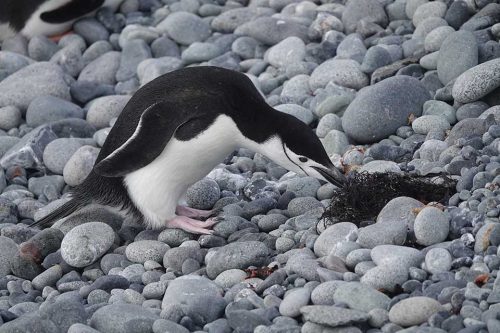
We would continue to see gentoos throughout our trip, including on the Antarctic peninsula.
On Stromness we saw our first colony of king penguins. At nearly three feet tall they are second in size only to the emperor penguin. They have some lovely orange colorations, with an inverted orange teardrop behind the eye toward the back of the head. The base of the lower mandible is also orange and they have a touch of orange where their chin and neck meet. They are very regal when standing still, like well-dressed sentinels, but when they walk they are often hunched forward. The parents take turns incubating the egg against their brood patch and their feet for over 54 days.
Chicks don’t fledge for 320 to 400 days, so that the adults in a colony are on eggs while the previous year’s chicks are molting. The 14-month-old chicks look like longhaired Cousin Itt (of Adams Family fame) before they transform into more regal plumage. We saw a number of juvenile birds molting seemingly from the feet up, in that the long feathers were on their head and shoulders so they looked like they were wearing a fur stole. Gentoos have the lengthiest fledging of any bird, which also adds to many complexities. A pair can only have two broods over a three-year period. Chicks are left alone from April to September in the astral winter, meaning that they have to fast for four to five months in a huddle within a creche.
Unlike other birds penguins molt all at one time over a two- to three-week period. They have to stay ashore since they are not waterproof while this occurs; therefore they must fast because they can’t go to sea to capture food. At one colony acres of ground were blanketed in feathers. It was important that we kept our distance from molting birds because they can’t expend energy while fasting.
On Fort Point, a rocky outcropping of Greenwich Island in the South Shetland Islands, Antarctica, we saw our fourth and final species—the chinstrap. As its name infers it has a black line running to its black-capped head that looks like, well, a chinstrap. There are eight different penguin species in the Antarctic region; some folks saw five, but it’s all about location, location, location.
When penguins return to the sea to forage they are designed for underwater flight with their flipper-like wings. All penguin wings are rather short compared to their airborne relatives. Their feet are used for steering. Their bones are not filled with air like other birds but are instead hard and thick to aid them in plunging through the water, like a diver’s weighted belt.
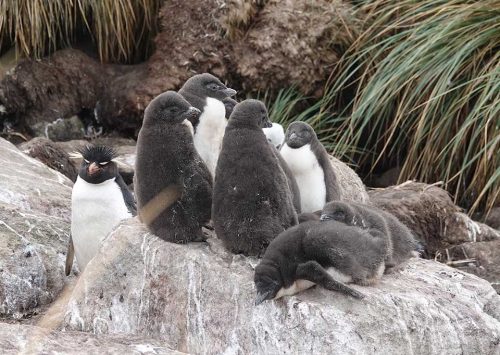
After a long submergence penguins come to the surface to roll. In doing so they trap air in the mesh of their feathers. Then they descend for a short dive and as the water pressure increases the volume of the trapped air is reduced by 75 percent. They hold the air tightly to their bodies using muscles that control their feathers.
To exit, penguins swim swiftly upward and the trapped air expands during their ascent, leaving a bubbly wake behind them that briefly resembles an airplane’s contrail in the sky. The air surrounds their body and reduces drag, allowing them to accelerate to double their normal swimming speed and rocket out of the water onto an ice floe—a flight of sorts.
Once we made the icy and snowy landings on the Antarctic Peninsula, we saw only gentoos. These sightings were most rewarding. The birds walked in their highway-like troughs of snow looking like helmeted soldiers in dugouts, each climbing to the top of a hill or mountainside. When descending a snowy hill occasionally a penguin would break ranks, leap off the well-trodden path, and belly-slide down the slope. Penguins are much more graceful in the water and it is not uncommon to see them slip and fall on the snow doing a full face-plant. They seem to take it in stride; they get up, give a good head shake, and continue on their way. Each takes a few weeks to relax, change all its feathers, and then go back to working at sea. I’m sure there is a life lesson hidden here for those who seek it out.
Sources
“The Penguin’s Palette: More Than Black and White,” American Scientist, Daniel T. Ksepka, (Jan. Feb. 2016).
The Wonder of Animals, BBC. How penguins launch themselves from the sea.
Antarctic Wildlife Guide, James Lowen.

